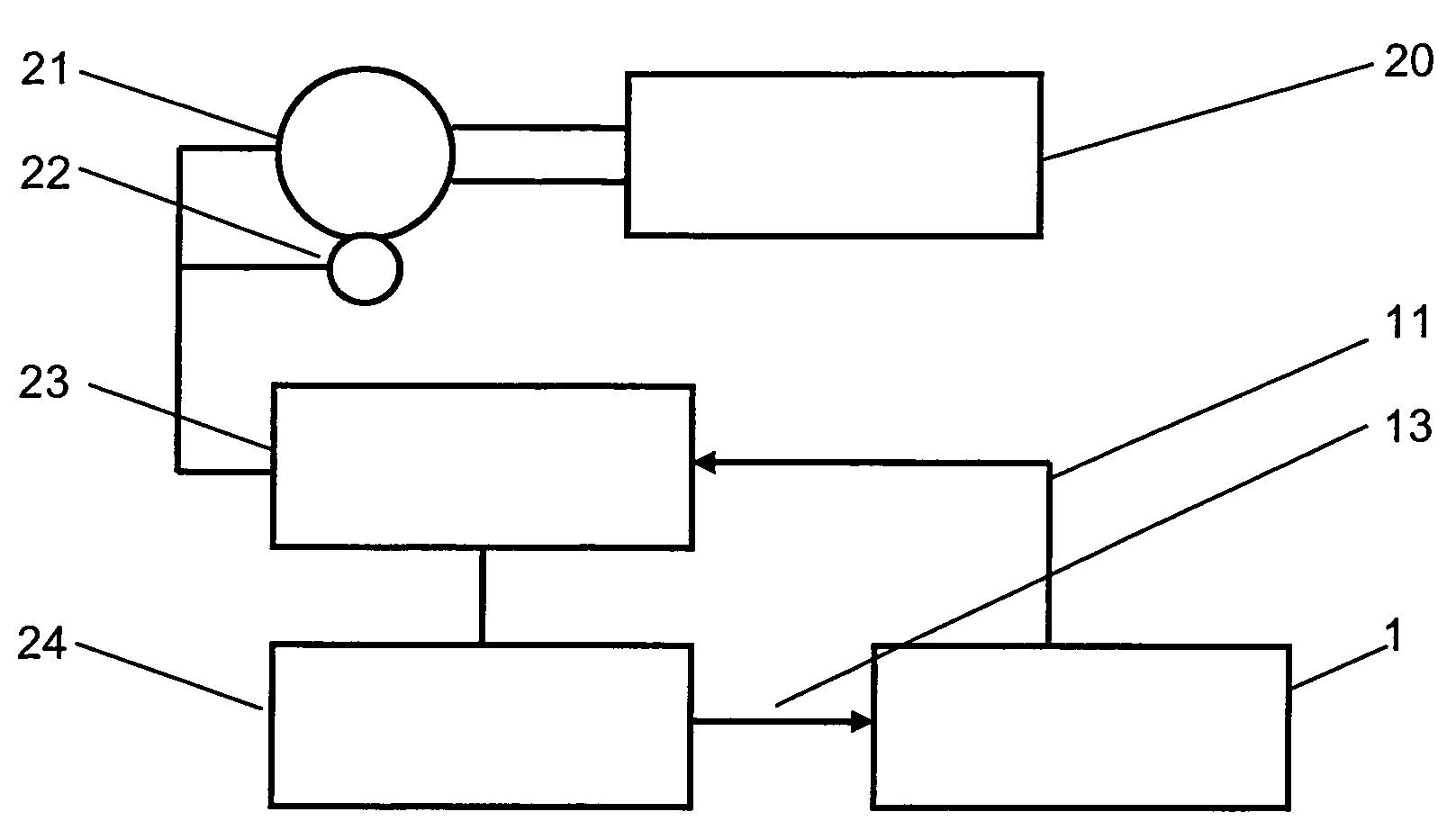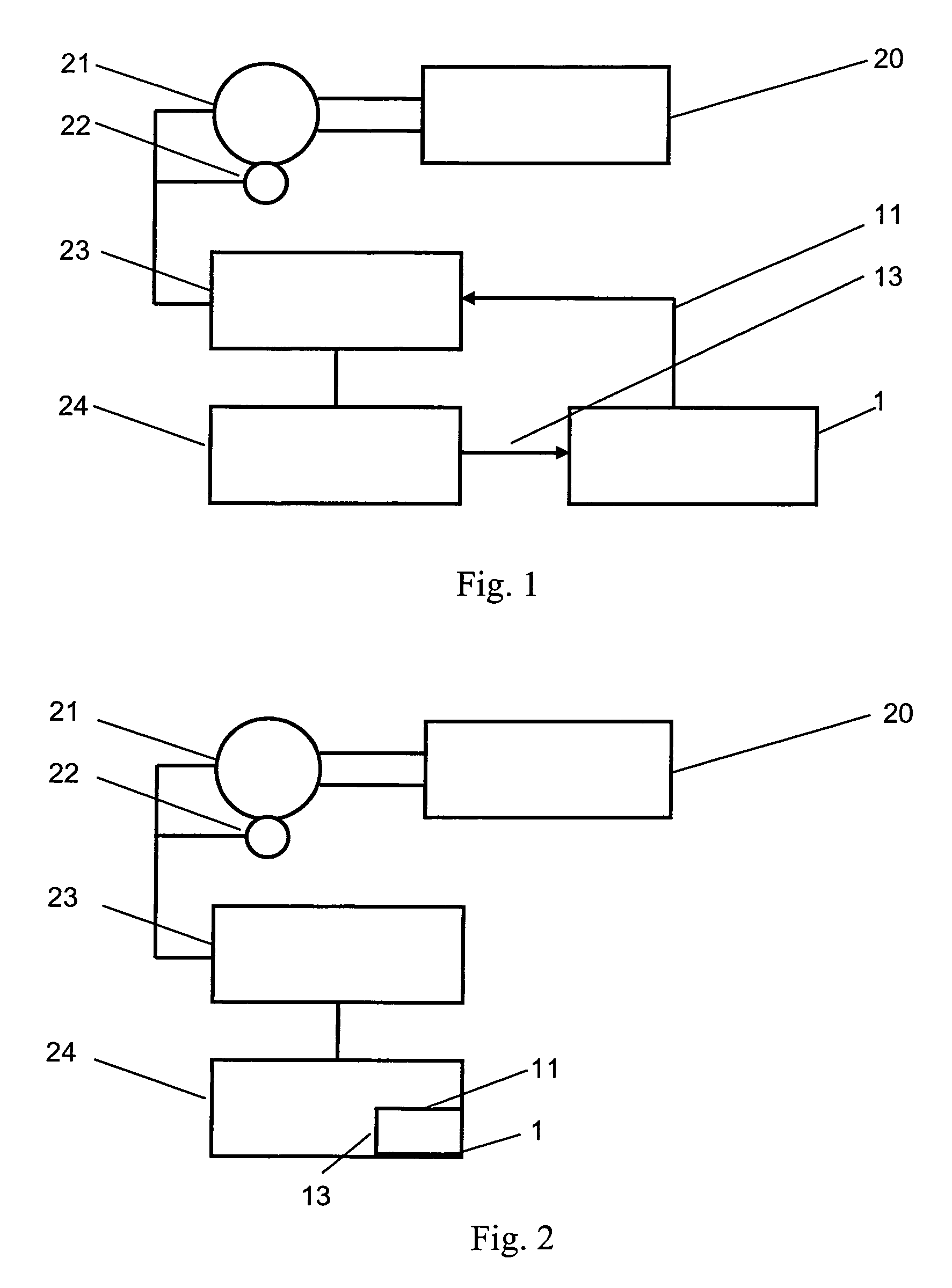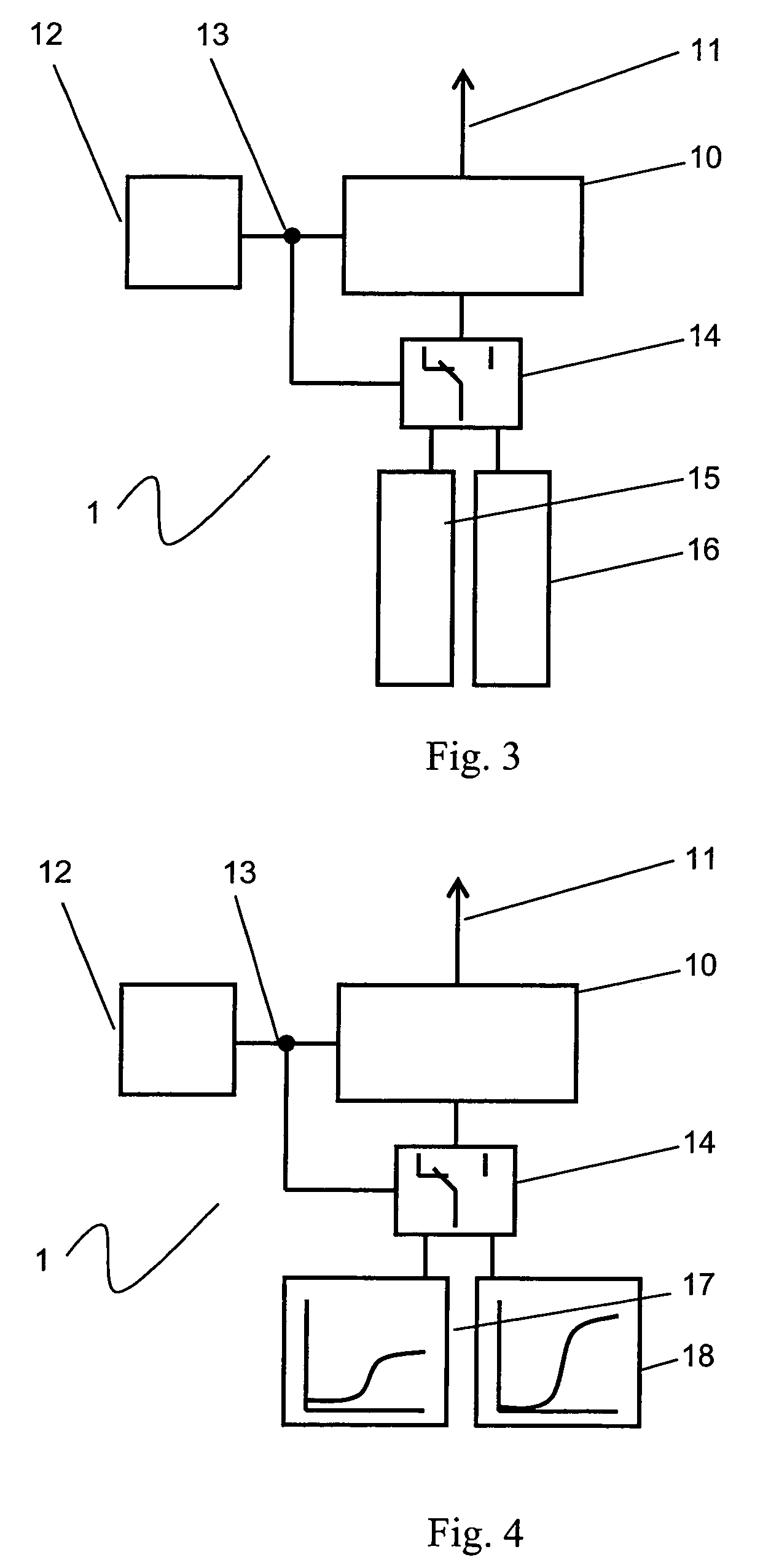Registration correction system
a technology of registration correction and registration, applied in printing presses, office printing, printing, etc., can solve problems such as adverse effects on registration accuracy, changes in material geometry, and deviations among various imprints, and achieve the effect of minimizing spoilag
- Summary
- Abstract
- Description
- Claims
- Application Information
AI Technical Summary
Benefits of technology
Problems solved by technology
Method used
Image
Examples
Embodiment Construction
[0027]FIG. 1 shows a registration correction system 1 with a motion controller 24 for a print roller 20 with an external registration correction system 1. The registration correction 1 acts via a controlling variable 11 on a switchover device 23, which supplies a drive motor 21 that in turn moves the print roller 20. The motion of the drive motor 21 is recorded by a rotary angle encoder 22 and is carried onward via the switchover device 23 to the motion controller 24. The registration correction system 1 receives an acceleration signal 13 from the motion controller 24. The acceleration signal 13 may be transmitted in binary form (for instance as a “set-point speed value attained” signal) or as an analog signal that represents the actual value of the acceleration.
[0028]FIG. 2 shows a registration correction system 1 that is integrated with the motion controller 24. Both the acceleration signal 13 and the controlling variable 11 occur only within the motion controller 24, making compl...
PUM
 Login to View More
Login to View More Abstract
Description
Claims
Application Information
 Login to View More
Login to View More - R&D
- Intellectual Property
- Life Sciences
- Materials
- Tech Scout
- Unparalleled Data Quality
- Higher Quality Content
- 60% Fewer Hallucinations
Browse by: Latest US Patents, China's latest patents, Technical Efficacy Thesaurus, Application Domain, Technology Topic, Popular Technical Reports.
© 2025 PatSnap. All rights reserved.Legal|Privacy policy|Modern Slavery Act Transparency Statement|Sitemap|About US| Contact US: help@patsnap.com



